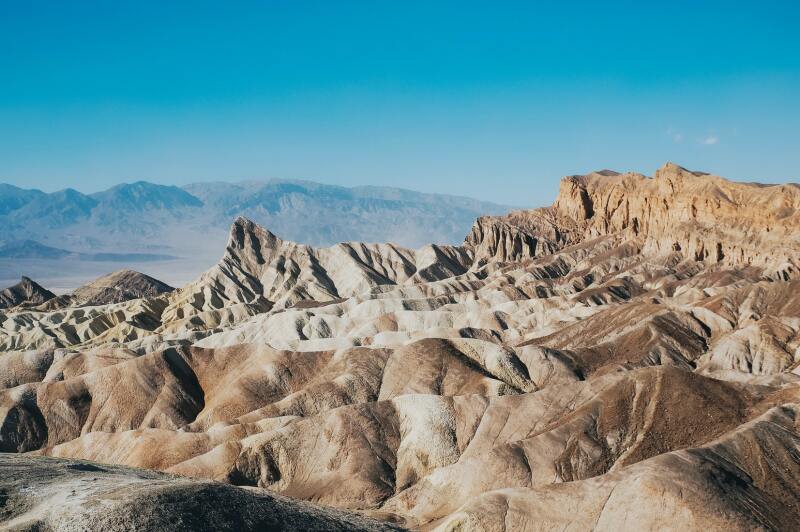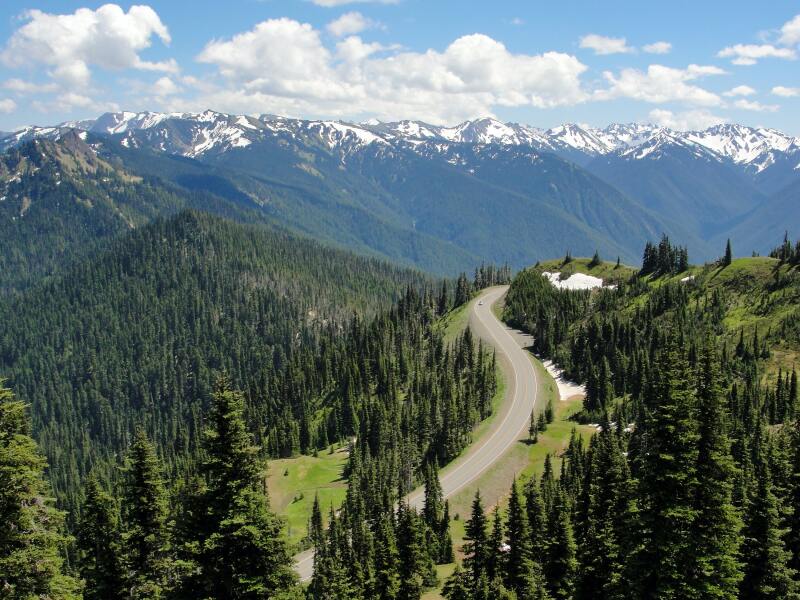Not far from some of the biggest cities in the United States, you’ll find inspiring places to see starry skies, wander pristine deserts, hear tales of our multicultural history, and more. Here are some new ways to play in our national treasures.
Arches National Park
Start from: Salt Lake City (4 hours by car) or Denver (5.5 hours by car)
What’s there: Red rock spires and more than 2,000 sandstone arches
Why now: Arches National Park is one of three area parks (including Deadhorse State Park and Canyonlands National Park) that joined forces for the first time this summer with the Utah Dark Skies Astronomy Outreach program to cohost monthly star parties. In the evening, stargazers meet at the visitor center for a talk of 30 to 40 minutes followed by constellation spotting and opportunities to peer through telescopes at distant star clusters. Also on display: the Milky Way galaxy, which 80 percent of North Americans can’t see at home due to light pollution.
Statue of Liberty National Monument
Start from: Manhattan
(15-30 minutes by ferry)
What’s there: The Great Hall of Ellis Island National Museum of Immigration, where more than 12 million immigrants entered the United States between 1892 and 1954
Why now: A new, more interactive audio tour provided by Acoustiguide: Sit on the benches where immigrants awaited their entry interviews and hear inspectors’ questions. Travelers also learn about the material things immigrants carried with them. Tours are available in 13 languages, including, for the first time, Hindi, Korean, and Portuguese, and videos for American Sign Language.

Biscayne National Park has an underwater Maritime Heritage Trail for snorkelers interested in subaquatic sites like shipwrecks.
Courtesy of CreativeCommons
Biscayne National Park Start from: Miami (1.5 hours by car)
What’s there: Mangrove islands, rare palm trees, and tropical reefs in a park that’s 95 percent water
Why now: The Biscayne National Park Institute recently launched guided eco-adventures that educate park visitors. Delve into local ecology during a trip to remote Elliott Key; spot graceful southern stingrays or one of four species of sea turtles on snorkeling tours of the colorful Florida Reef. Biscayne is one of 11 national parks in Florida, and expanded offerings may soon include “paddlebirding” excursions to see mangrove cuckoos and great blue herons.

Death Valley is the nation’s hottest, driest, and lowest national park.
Photo by Meriç Dağlı
Death Valley National Park
Start from: Las Vegas (2 hours by car) or Los Angeles (4 hours by car)
What’s there: Vast dunes, twisting slot canyons, and vistas from the 11,049-foot Telescope Peak
Why now: A multimillion-dollar renovation is morphing the former Furnace Creek Resort into the Oasis at Death Valley, where 22 new casitas will open this fall to join the 66-room inn and 224-room ranch. Natural springs have long made the area a true oasis, but additional date palms and shade trees will create an even more private refuge.
Gulf Islands National Seashore
Start from: New Orleans (3 hours by car)
What’s there: White sand beaches, five species of nesting sea turtles, and a military fort dating back to 1829.
Why now: Because the road to Fort Pickens is routinely flooded during rainstorms, Gulf Islands National Seashore launched a new ferry service that carries passengers from Pensacola (and Pensacola Beach) to the Fort Pickens Campground and its adjacent hiking trails and beaches.

Olympic National Park is one of the few U.S. places with rain forests.
Photo by Miguel Vieira/CreativeCommons
Olympic National Park
Start from: Seattle (2-3 hours by car)
What’s there: Glacier-draped mountains, mossy rain forests, and rocky Pacific beaches
Why now: In May, Log Cabin Resort replaced dilapidated, 1930s-era accommodations with new two-bedroom cabins on Lake Crescent (which also features a new dock for launching kayaks and paddleboards). The menu at Lake Crescent Lodge now features razor clams, locally smoked salmon, and other Northwest specialties. And renovations at the Sol Duc Hot Springs Resort updated the lobby and restaurant with gleaming new wood and granite.
Yosemite National Park
Start from: San Francisco (4 hours by car) and Sacramento (3.5 hours by car)
What’s there: Alpine meadows, massive sequoia trees, waterfalls, and iconic granite features such as El Capitan and Half Dome.
Why now: English floral prints mingle with California mission furniture at the Ahwahnee Hotel, where the remodeled guest rooms feature custom-forged sconces and copper-topped tables. Get your Starbucks fix at the new Base Camp Eatery, which includes an espresso bar as well as a diner serving local brews (try the Half Dome California Wheat).
Glen Canyon National Recreation Area
Start from: Salt Lake City (5 hours by car) and Las Vegas (5 hours by car)
What’s there: Red-rock cliffs and scenic Lake Powell—which is popular with everyone from houseboaters to kayakers and water-skiers.
Why now: New outdoor trip-planning exhibits at the Escalante Interagency Visitor Center give visitors round-the-clock access to maps, weather alerts, and closures. And a new mobile app lets hikers and boaters recall that info from any point in the park, even when they don’t have cell coverage. That makes it easy to consult flash flood forecasts before you squeeze through slot canyons and other storm-prone parts of the park.











